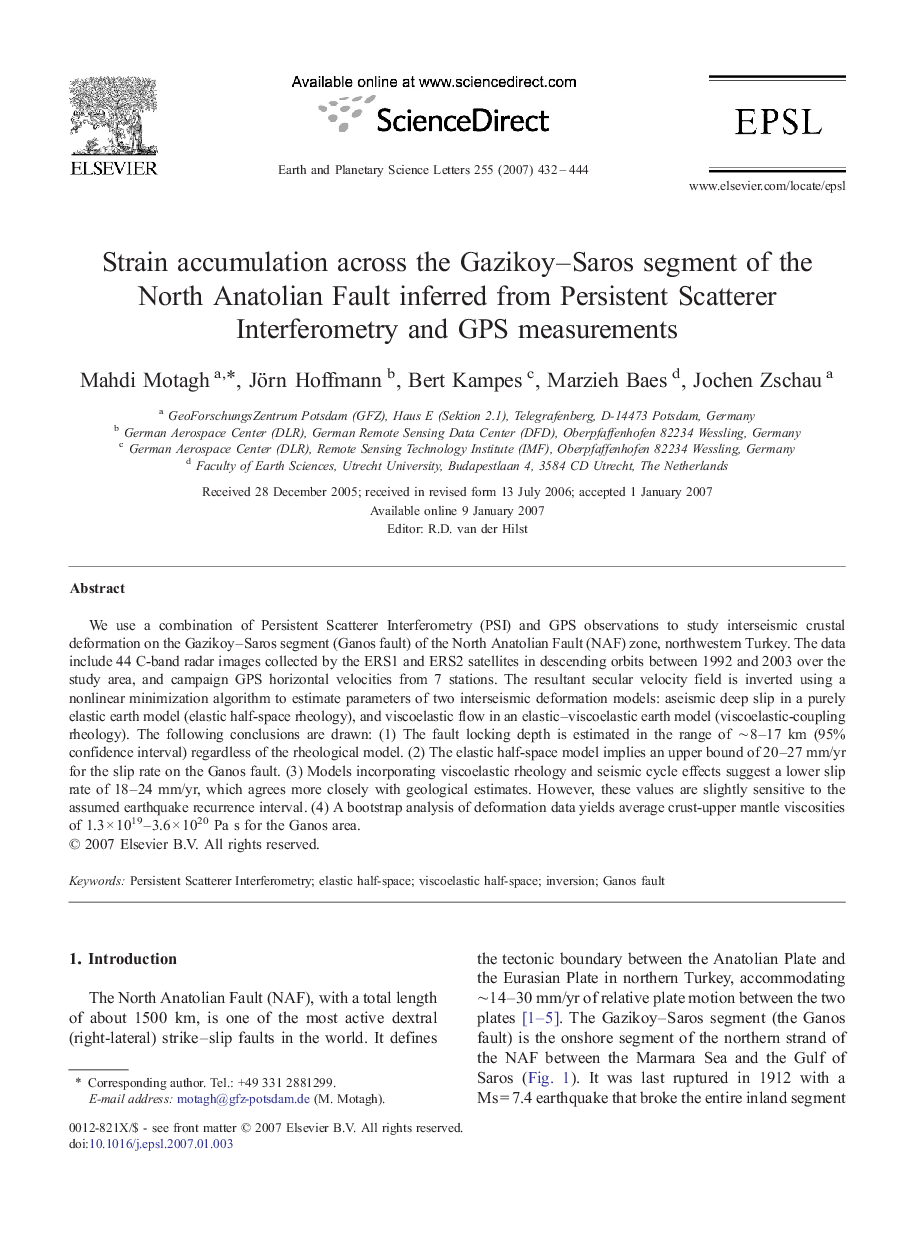| Article ID | Journal | Published Year | Pages | File Type |
|---|---|---|---|---|
| 4680433 | Earth and Planetary Science Letters | 2007 | 13 Pages |
We use a combination of Persistent Scatterer Interferometry (PSI) and GPS observations to study interseismic crustal deformation on the Gazikoy–Saros segment (Ganos fault) of the North Anatolian Fault (NAF) zone, northwestern Turkey. The data include 44 C-band radar images collected by the ERS1 and ERS2 satellites in descending orbits between 1992 and 2003 over the study area, and campaign GPS horizontal velocities from 7 stations. The resultant secular velocity field is inverted using a nonlinear minimization algorithm to estimate parameters of two interseismic deformation models: aseismic deep slip in a purely elastic earth model (elastic half-space rheology), and viscoelastic flow in an elastic–viscoelastic earth model (viscoelastic-coupling rheology). The following conclusions are drawn: (1) The fault locking depth is estimated in the range of ∼ 8–17 km (95% confidence interval) regardless of the rheological model. (2) The elastic half-space model implies an upper bound of 20–27 mm/yr for the slip rate on the Ganos fault. (3) Models incorporating viscoelastic rheology and seismic cycle effects suggest a lower slip rate of 18–24 mm/yr, which agrees more closely with geological estimates. However, these values are slightly sensitive to the assumed earthquake recurrence interval. (4) A bootstrap analysis of deformation data yields average crust-upper mantle viscosities of 1.3 × 1019–3.6 × 1020 Pa s for the Ganos area.
